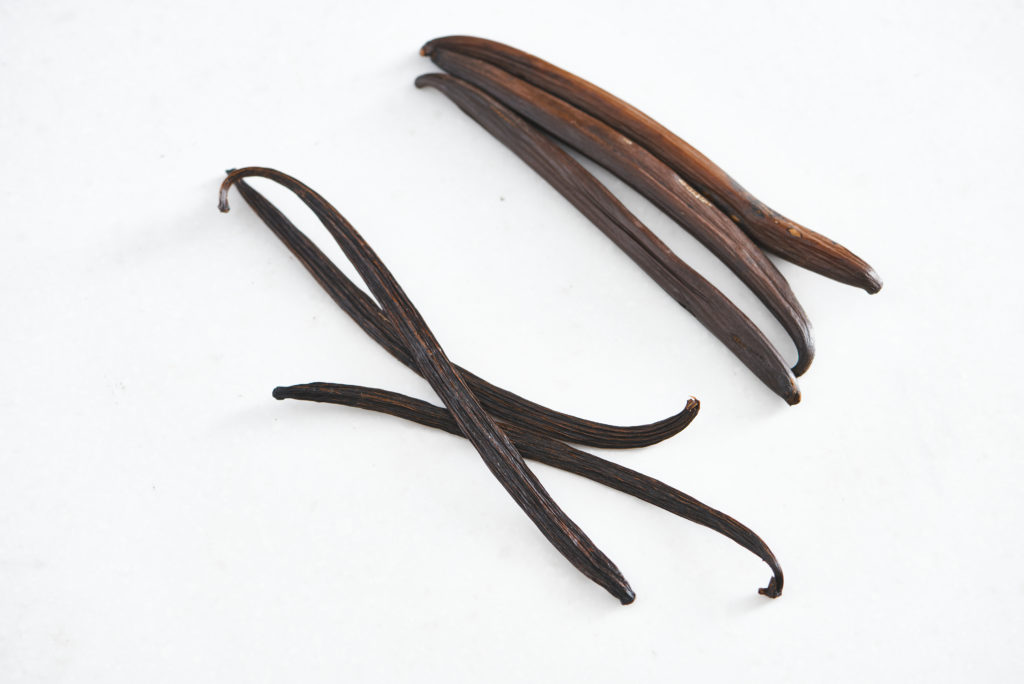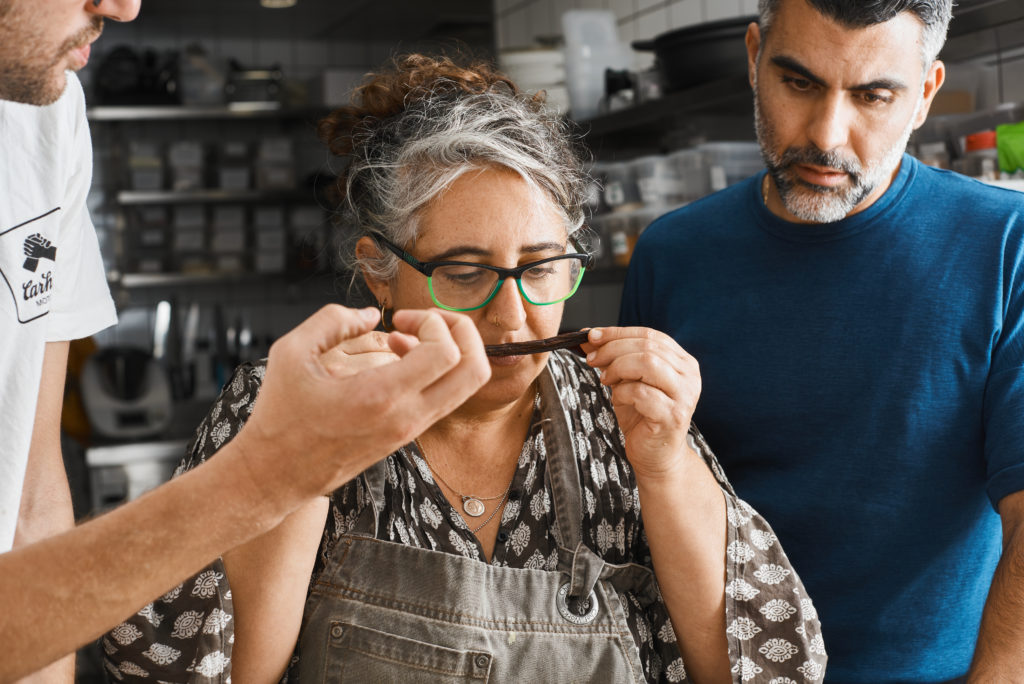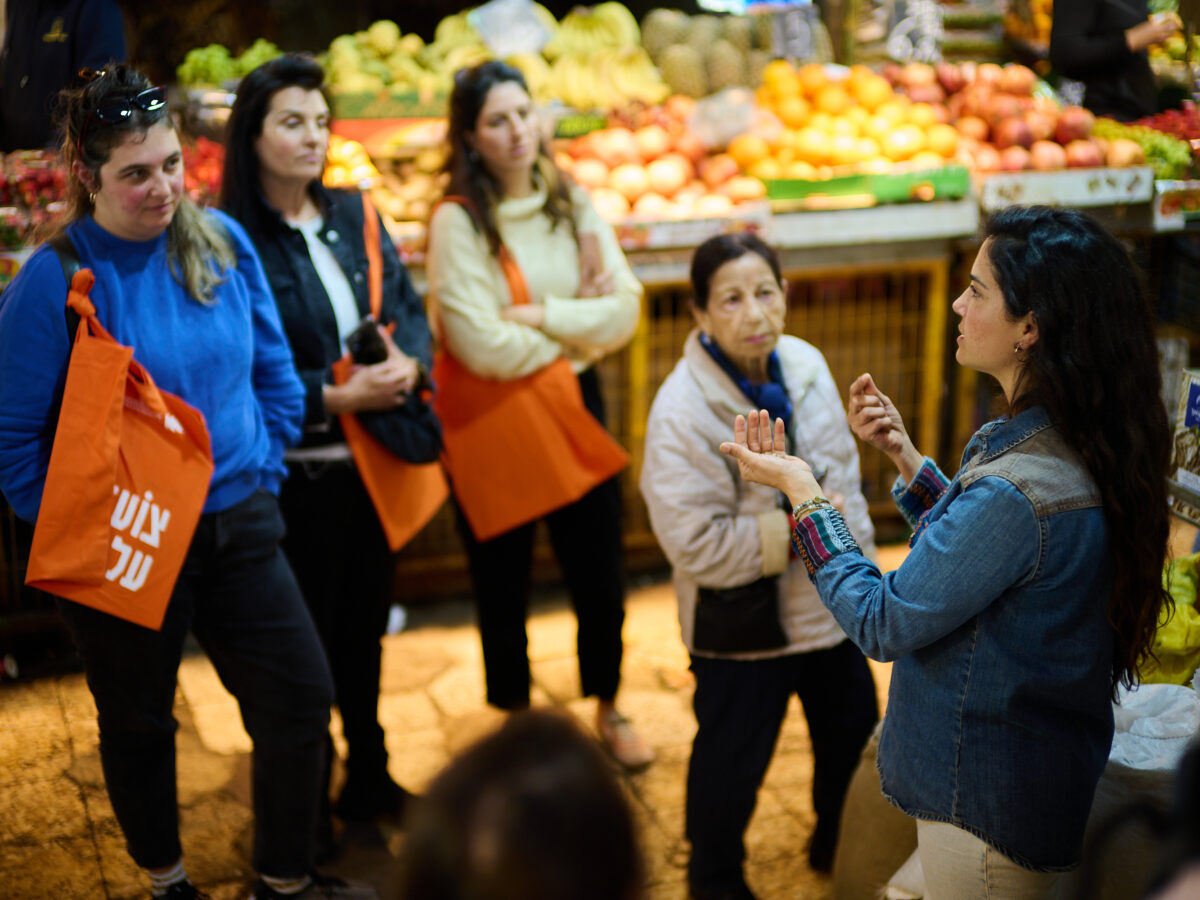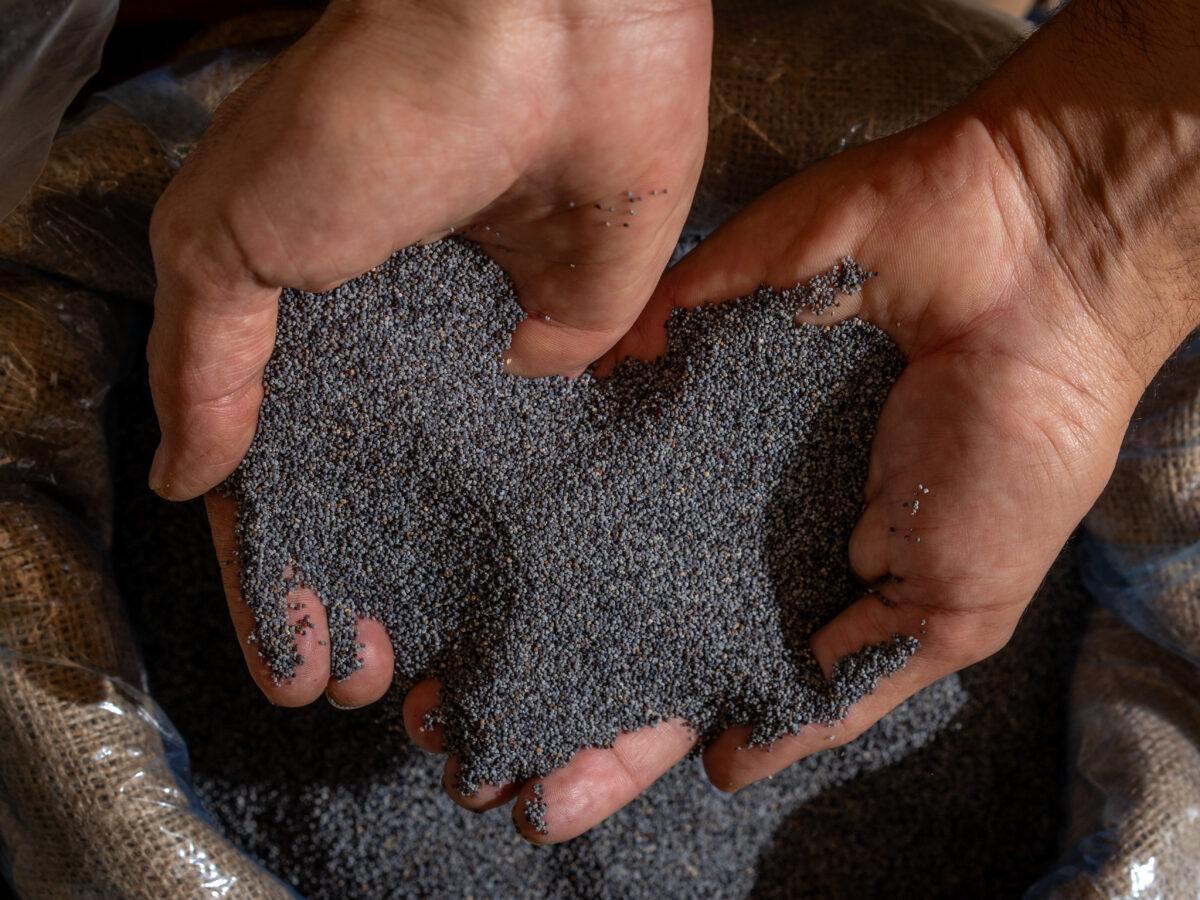The price of a single vanilla pod can reach 30 NIS (nearly $10), and at times of crisis — like after massive wildfires or theft by organized crime — it can rise even higher. The result is a market that is almost entirely artificial; only 5% of world vanilla is real, meaning most of the vanilla used in products around the world is synthetic, made from petrochemicals.
Will the Israeli startup company Vanilla Vida, based in the Galilee town of Tzipori, be able to turn the tables? The company, which is less than two years old, is attempting to revolutionize the vanilla market by growing more concentrated pods and ones with different flavor profiles like floral or nutty. We sat down with founder and CEO Oren Zilberman,34, in the Asif test kitchen to ask him about the technology required to grow vanilla in Israel, if the company is concerned about undermining the traditional agricultural industry in Africa, and why has no one tried to rethink the vanilla industry before.
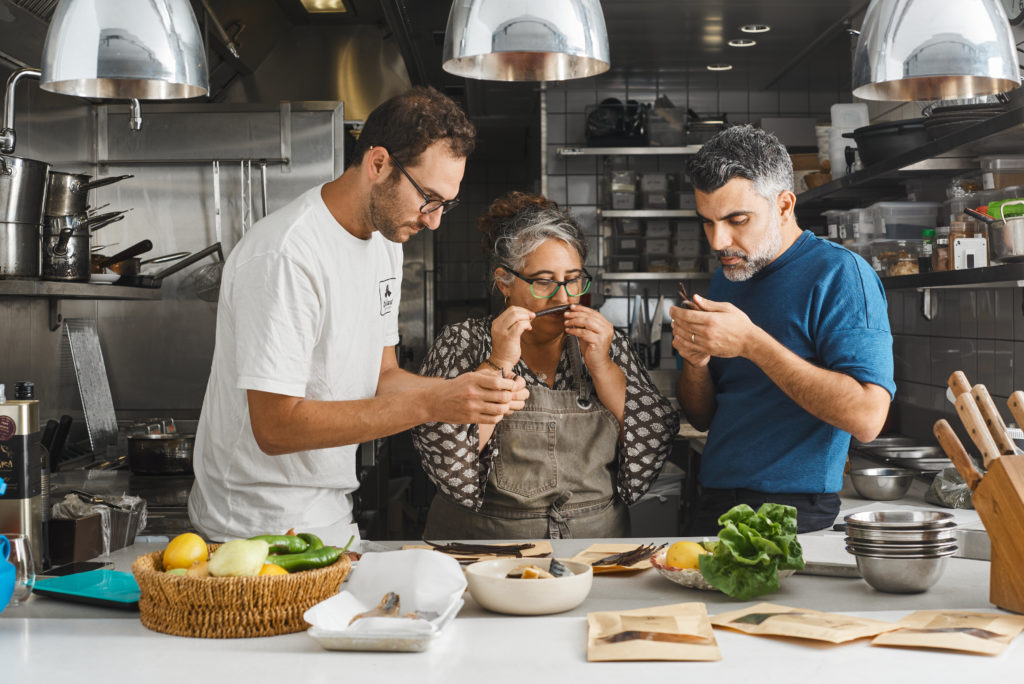
Matan Choufan: Vanilla has been around for centuries, so it’s not a new ingredient by any means. What makes your product innovative?
Oren Zilberman: Growing vanilla is an extremely challenging task, especially if you are interested in growing a large quantity of fruit per square meter. If you just want to grow vanilla outside its natural environment, you can do that pretty easily: You just take a seedling and grow it at home. The complexity is in standardized mass production, and in the drying process. Drying is a very long, biologically complex process. There is no uniformity. We have invested a lot in optimization and in breeding, which are highly elaborate and data-rich processes.
In traditional vanilla cultivation, drying accounts for most of the material cost: only 15% of it comes from growing. Here in Israel, it is the other way around: agriculture costs more, because of the sophisticated structure. In the drying stage we use optimization and data tools that allow us to cut costs. For this reason, drying is cheaper in Israel than in Africa, where it is done in the traditional way, out in the open. These are not sterile conditions; sometimes it rains, or a bird flies above and defecates. It’s beautiful and magical, but it affects the sterility and quality of the material. At Vanilla Vida, we follow pharmaceutical standards, and the result is a much more concentrated product. Whereas vanilla beans from Madagascar have 1.2% vanillin content [the key compound in vanilla], the Vanilla Vida product has 4%. This is a dramatic difference, especially in such an expensive product.
Let’s take a step back for a moment. When was the company founded?
January 2020.
Very recently, and you already have a product. Compared to other high-tech companies, this is a very short schedule.
We spent many sleepless nights, and achieved technological success very quickly. The idea came up in 2019, we went on a funding round, and founded the company in early 2020.
Where are you located?
We do “vertical integration,” which means we are working on several things in parallel and also operate from two distinct locations. Our agricultural development center, or AgriTech, is located at Yesud HaMa’ala, which is where we grow our vanilla beans. Our FoodTech – including growing and marketing – is currently located at Strauss’s The Kitchen FoodTech Hub, but we will soon move to a new location.
So how do you begin growing vanilla, where did the seedlings come from?
The first seedlings came from Africa. As the original seedling you start with is a crucial factor, selecting it was a complex and costly process. We checked what would yield the best fruit – which type of vanilla, from which village, in which province, in which country. It took us a long time to find it, but eventually, we did.
And yet, relatively speaking, this “long time” was not that long.
It took us about a year and two months, including a lot of time spent on bureaucracy and import licenses. Once we knew which seedlings were right for us, we had them delivered.
And are you still importing today?
No, today we use the original seedlings for breeding. We grow plants from tissue culture, that is, we grow vanilla from its first and most basic building block. We cut a tiny piece from the plant’s top, its newest part, and germinate it in a test tube with special substances. The great advantage of this method is that you start with a pure material, 100% disease-free. If there is a virus, a pest, anything – we can identify it immediately. On the other hand, it is much more expensive. Today we are beginning to mass produce tissue culture, in collaboration with the Ginosar Kibbutz.
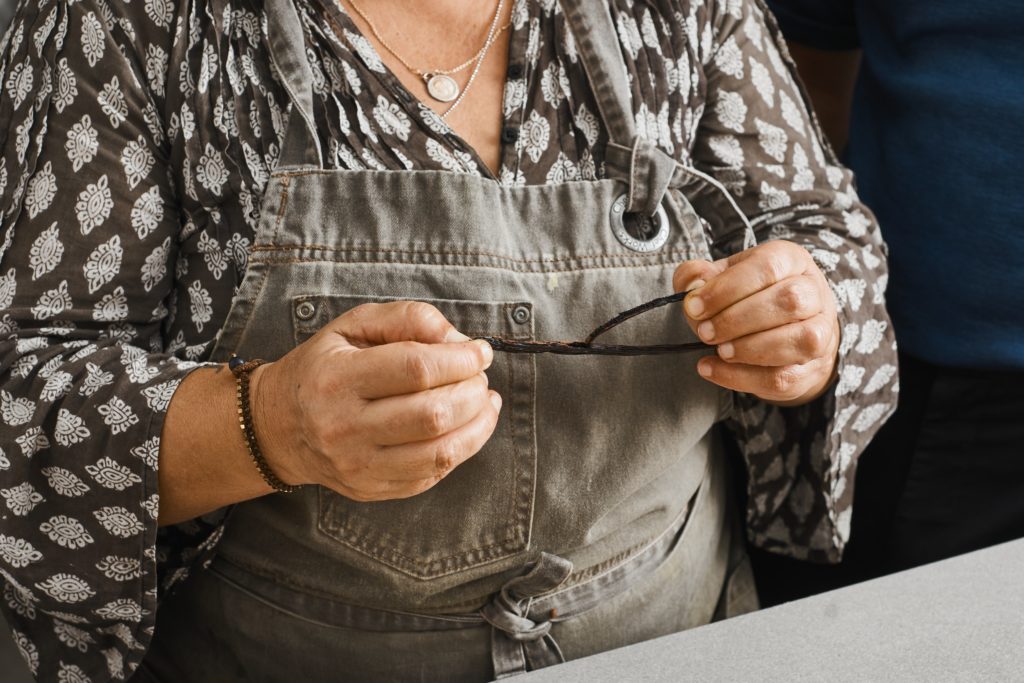
What is your background?
I am a farmer’s son. I was raised as a farmer, my father still works as a farmer. After serving in the Israeli army, I completed a BA in management and economy, and then continued to study business administration. I worked in venture capital, and my expertise was investments in technological agriculture, AgriTech.
You said you were “a farmer’s son.” Do you feel this was a significant contribution to Vanilla Vida’s success?
Absolutely. We are an agricultural product, and I have the ability to understand agriculture, to overcome agricultural challenges. I am familiar with the professional language, and I know how to deal with unplanned and unexpected events. Agriculture is a complex world, and technological agriculture all the more. This combination between the technological-analytical [knowledge] and working the land, the practical knowledge, is a key factor for me as a CEO and for Vanilla Vida in general.
How come you are the first to do this? Vanilla prices have been soaring for years due to high demand and natural disasters. With such a huge business opportunity, there must have been other attempts to grow vanilla around the world. With no disrespect, if you managed to do this so quickly, maybe it’s not that complicated?
We are not the first to think of growing vanilla outside its natural environment, but we are the first to cover the full chain of production. We have competitors in cultivation, mainly in the USA, France, India, and Australia, but none of them has started to grow commercially. Vanilla has not been truly studied, except academically, to a small degree. It’s only in the last two years that private companies and startups began to show interest, and only in the agricultural world. No other company does cultivation, curing and automating — this is what differentiates Vanilla Vida, this is its strength.
Why vanilla? Other FoodTech and AgriTech companies, especially Israeli ones, are trying to develop solutions for products that are considered more crucial for nutrition or global warming.
We have a single motivation – vanilla is the most popular flavor in the world, but only 5% of it is natural; 95% of the market is synthetic vanillin produced from petrochemical raw materials. Our only motivation is to help the world consume a more natural product. Today, demand exceeds supply. The raw material is extremely expensive, and it is expected to remain this way in the foreseeable future. So we have a business opportunity, a very high demand, and a challenge that is fun to solve — technically, agriculturally, its automation etc. As entrepreneurs, we are motivated by challenges and by the possibility of making an impact. The challenge is big enough, yet there is no need to invent a new product. I am not trying to sell you the milk of the future or cultured meat. We are a more practical type of entrepreneurs, taking an existing product and making it better. It also allows a much quicker entrance to the market.
As natural vanilla is produced by traditional farming in third world countries, are you not concerned about being seen as aggressive, trying to deprive these people of their livelihood?
This is a good and important question. The answer is no. We always say that we are not here to replace traditional farmers. We want to work side-by-side with them and expand the market for all of us. Today in Madagascar (the world’s largest vanilla exporter) they are burning jungles to grow more vanilla. There is already a huge deficiency in the market; we want to fill this vacuum, not to take anybody’s place. A big part of our model is to transmit knowledge to the traditional world, to help them improve. When we approach a big essence manufacturer, we do not want to be its unique provider. I want to help decentralize the supply chain and maintain it, make it stable and consisten. I want to be 15-30% of their supply. I want to help the world consume vanilla that is more natural, and this means we need to expand the market with technology and an increased supply. I want to take a small piece of the pie.
That is, you target the synthetic vanilla market? The 95%?
Exactly. Like I’ve said, we want to help the world consume more natural vanilla, and the way to do so is to produce more natural vanilla. Big companies need regular supply. We want to increase the amount of raw material, and this increase in production capacity and production stability makes it possible for corporations to move from synthetic vanilla to natural vanilla. Again, our model is not to replace traditional farmers, but to work in parallel.
You are located and operate in Israel. Do you also target the local market?
No. This is not our business focus right now. In the future, we would be delighted to provide for the local market and make Israel a consumer of natural vanilla. The demand for our product is huge as is. More than 300 people, restaurants and bakeries in Israel have contacted us so far, but as I’ve said, this is not our main focus or business at the moment. On a personal level we would love to do so in the future.
What about big Israeli companies, such as Strauss and Tnuva?
They are the clients of our clients. We sell to manufacturers abroad that use our vanilla to produce extracts.
Why not cut processes and sell directly?
Because we are not going into the essence market at the moment. We will get there in a few years. We will be producing essences too, not only seedlings and dried beans. Tactically, it’s not yet time. It will be, when we reach 10 acres of greenhouses and will be the world’s biggest grower; timing is crucial. At the moment, we do not want to step into the shoes of our key customers. As part of a model of vertical integration — we will certainly get there. When? When we are strong enough.
At the bottom line, what is your product’s consumer price?
Today we sell at what is called “Madagascar price,” which is 250 USD per 1 kilo of vanilla. Next year we will be selling at a new price — the Vanilla Vida price. It will be higher, as our concentration is much higher, too — if I sell 1 kilo for 300 USD, it’s as if the customer bought 2 kilos for 150 USD each.
You do not have one generic product, but a line of vanilla products with slightly different flavor profiles: herbal, tangy, chocolaty, or nutty. How is this achieved in a natural product?
That is another technology we developed. We know how to manipulate the material’s building blocks, to make a tailor-made product. It’s a registered patent and it’s FDA approved. This is only the beginning, but we already have dozens of vanillas. We have done similar experiments with coffee and cocoa beans, although this is not a market we target at the moment, and the technology has had amazing success there too.
This idea reminds me of distiller Yuval Joov Hargil’s article, in which he describes how he controls the distillation process to create different aromas and flavors in his drinks, and even an article by professor Nativ Dudai from Volcani Center, who explains how he controls parameters such as the flavor, scent, and the nutritional values of herbs. How exactly do you do this?
We use processes of smart drying to influence the beans’ aroma and create different flavor profiles. I know professor Dudai, of course. He participated in the research and writing of an article by professor Efraim Levinson from Volcani Center about influences on aroma in melons and grapes, and has been an inspiration for Raz Krizevski, our CTO, in developing our technology.
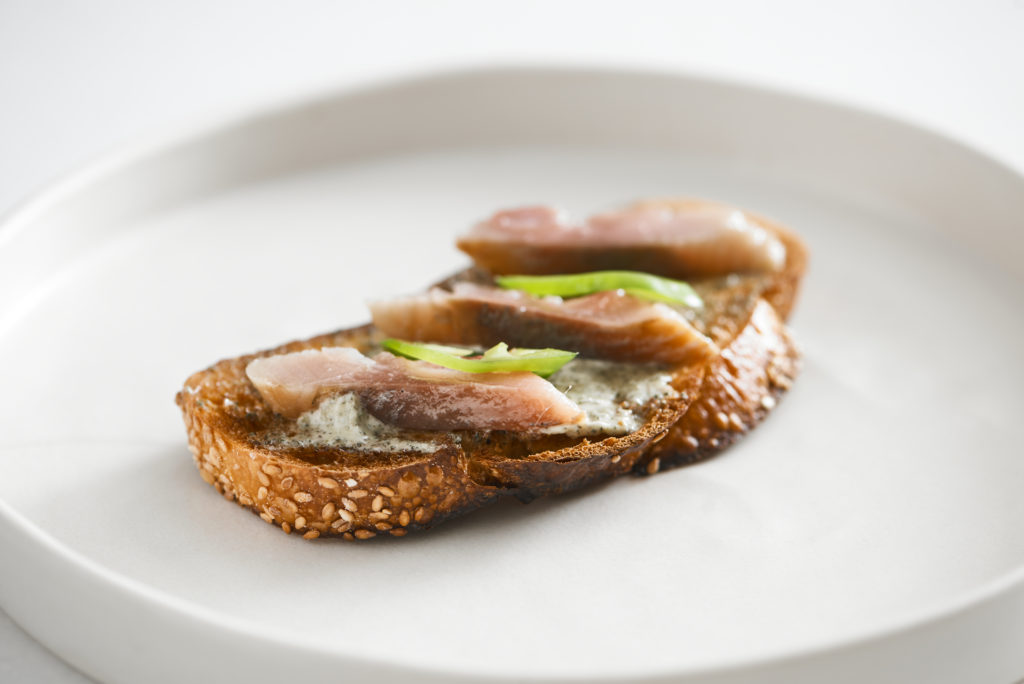
What’s next? Do you plan additional “vertical integrations” around the world?
Yes, certainly. Israel was a good place to start, the ecosystem here is amazing. The next station will be Spain, the USA or some country in Africa. But in the short to medium term, 4-5 years, we first want to make Israel into a technological agriculture-based vanilla superpower. Later on, we will examine other places.
Devra Ferst contributed research to this story.


